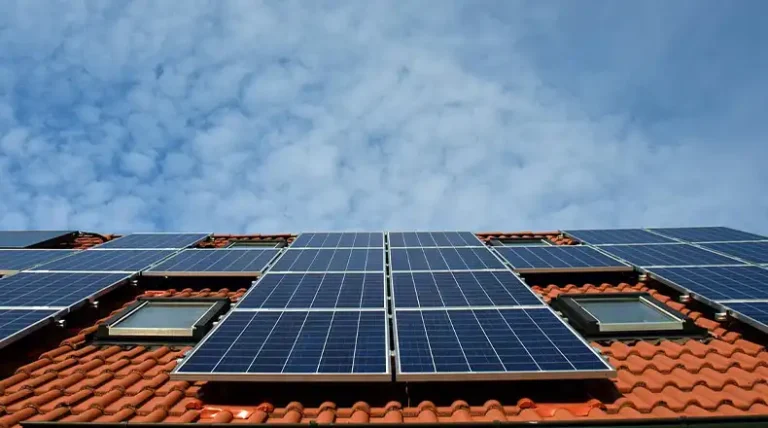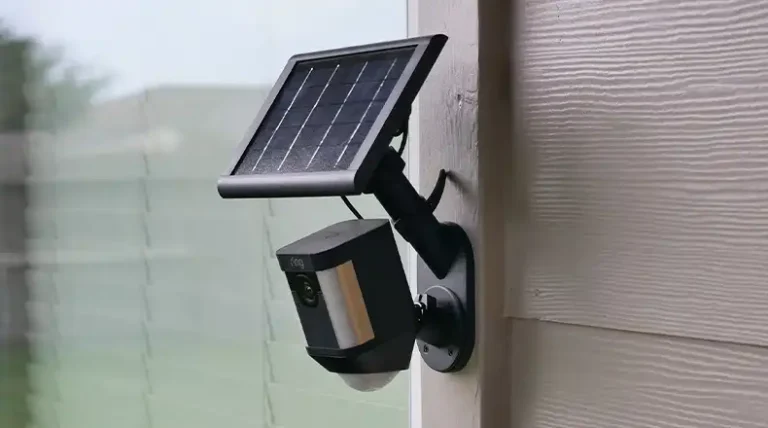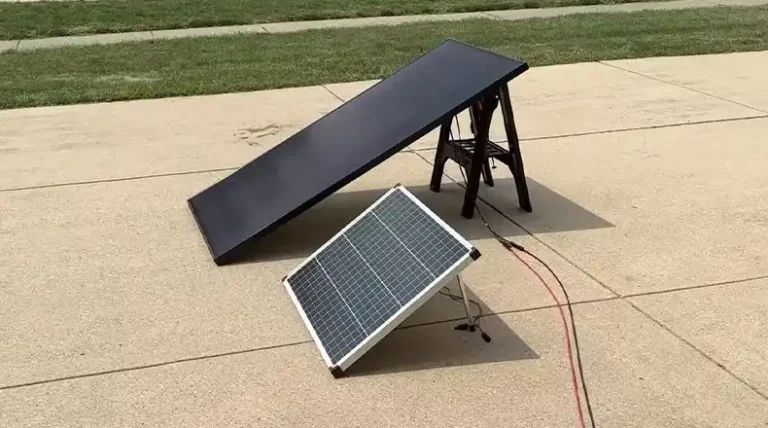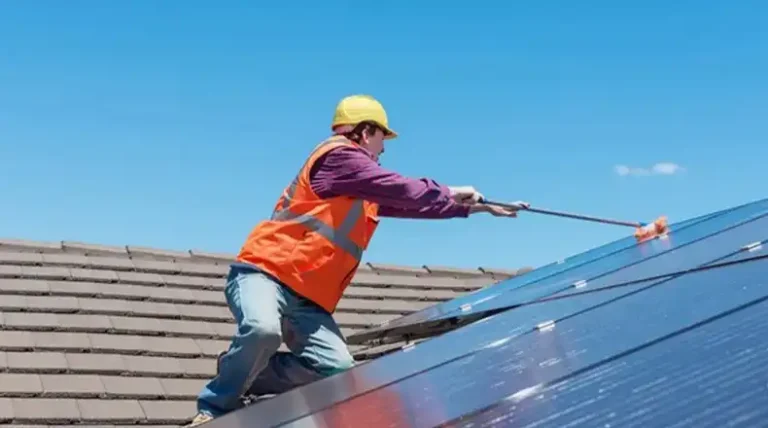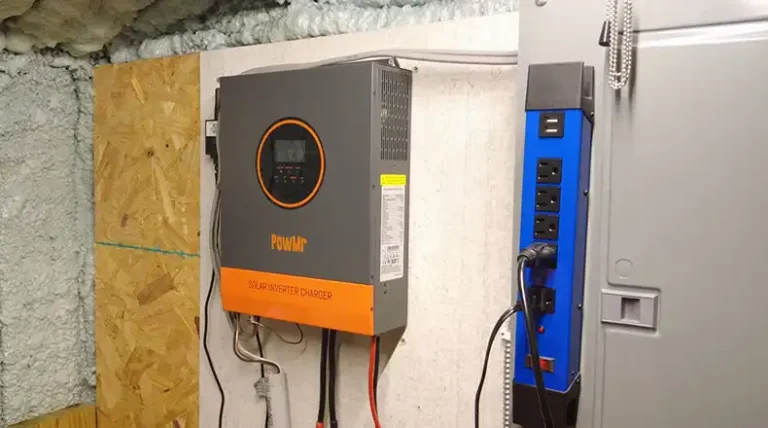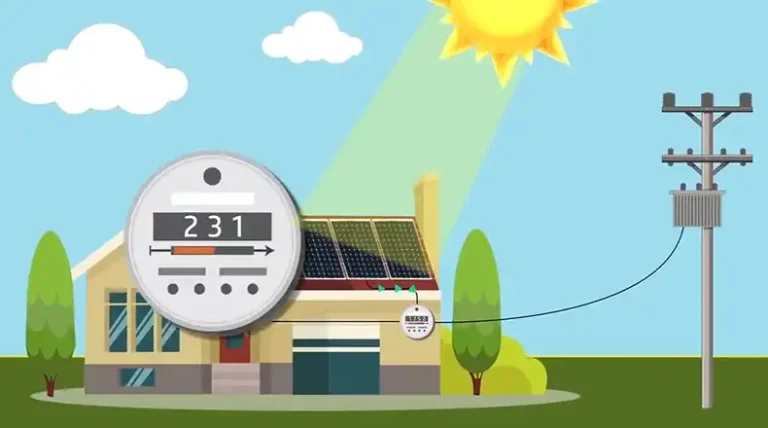What Size Solar Panel to Charge a 200Ah Lithium Battery? What to Consider
Solar power, with its renewable and environmentally friendly attributes, has become an increasingly popular choice for those seeking to harness the energy of the sun to power their daily lives. If you’re considering setting up a solar panel system to charge a 200Ah lithium battery, it’s crucial to get the sizing right for optimal performance.
There are a large number of people who want to install solar panels at their places, but when it comes to charging a 200Ah lithium battery, they all have a common question — what size solar panel do you need to charge that hefty battery efficiently?
The answer is just one step ahead of you. All you have to do is keep reading till the end without skipping any part. So, without any more delay, let’s get to the answer straightforwardly!
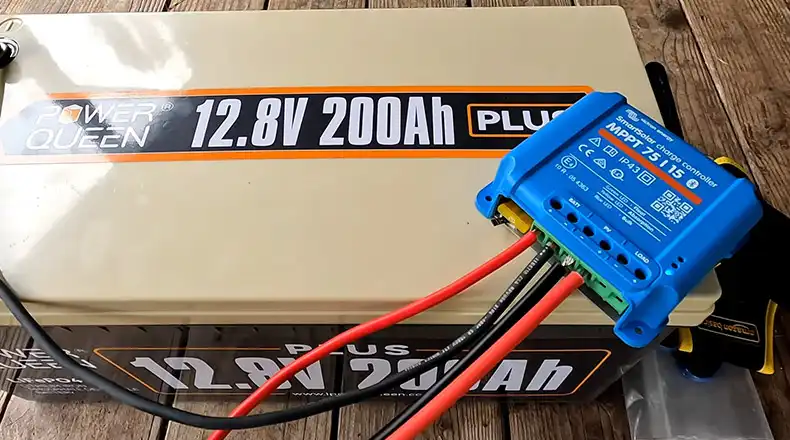
What Wattage Solar Panel Is Perfect to Charge a 200Ah Lithium Battery?
Cut to the chase, to charge a 200Ah lithium battery effectively, you’ll need approximately 610 watts of solar panels if you’re using an MPPT charge controller. That’s the abridged answer. But as the wise ones say, the devil is in the details, and there are several factors to consider.
If you opt for a PWM charge controller, things get a bit more complicated. You’ll require around 760 watts of solar panels to charge the same battery in the same time frame. The reason is that PWM charge controllers are less efficient than their MPPT counterparts, so you need more solar panels to compensate for this inefficiency.
But the aforementioned information is about the 12V 200Ah lithium battery. To make things convenient, we’re providing a quick information table about the required solar panel size for 12V, 24V, and 48V 200Ah lithium batteries –
| Charge Time | Charge Controller Type | Required Solar Panel Size (12V) | Required Solar Panel Size (24V) | Required Solar Panel Size (48V) |
| 5 peak sun hours | MPPT | 610 watts | 305 watts | 150 watts |
| 10 peak sun hours | MPPT | 300 watts | 150 watts | 75 watts |
| 15 peak sun hours | MPPT | 200 watts | 100 watts | 50 watts |
| 20 peak sun hours | MPPT | 150 watts | 75 watts | 38 watts |
| 25 peak sun hours | MPPT | 130 watts | 60 watts | 30 watts |
| 5 peak sun hours | PWM | 760 watts | 380 watts | 190 watts |
| 10 peak sun hours | PWM | 380 watts | 190 watts | 95 watts |
| 15 peak sun hours | PWM | 250 watts | 125 watts | 63 watts |
| 20 peak sun hours | PWM | 190 watts | 95 watts | 48 watts |
| 25 peak sun hours | PWM | 150 watts | 75 watts | 38 watts |
This table is your go-to reference guide when deciding on the size of your solar panel setup. Remember that ‘peak sun hours’ are the hours during the day when the sun’s intensity is strong enough to generate significant solar energy.
If you are not sure how much sunlight your location receives, you can use a solar calculator to estimate this. You can also use a solar calculator to estimate how much power you will need to produce to meet your needs. Once you have estimated your power needs, you can choose the size of solar panels and charge controller that is right for you.
Which Key Variables Play a Role In Choosing Solar Panel Size?
The decision to harness solar power through the installation of solar panels is an environmentally conscious and economically savvy move. However, determining the ideal size of your solar panel system can be a complex task. As with any worthwhile endeavor, it’s never one size fits all. Several crucial variables come into play, each impacting the overall efficiency and effectiveness of your solar setup. They are –
1. Sunlight Availability
The primary factor influencing the success of a solar power system is the amount of sunlight available in your location. Regions with abundant sunlight, like Arizona, will yield significantly more energy compared to cloudier areas like Seattle. Solar calculators can precisely estimate the sunlight hours and intensity in your specific area, helping you determine the feasibility of solar power generation.
2. Solar Panel Efficiency
Solar panels are not created equal in terms of efficiency. The quality and design of solar panels vary, affecting the amount of energy they can convert from sunlight. High-efficiency panels can make a substantial difference in overall system performance, ensuring more energy is harnessed for your needs.
3. Charge Controller Efficiency
The type of charge controller you select plays a crucial role in optimizing your solar system’s performance. MPPT controllers are known for their high efficiency in extracting energy from solar panels, while PWM controllers are less efficient. Choosing the right controller impacts the amount of energy effectively transferred to your batteries.
4. Power Consumption
Your power consumption dictates the size and capacity of your solar panel setup. The more power you require, the larger the array of solar panels you’ll need to meet your energy demands. Accurate knowledge of your power consumption is vital to design a system that can provide a reliable source of renewable energy to meet your needs.
Wrapping It Up
By now, you’re armed with the knowledge to choose the right solar panel size to charge a 200Ah lithium battery. It’s not just about having the right panels; it’s about understanding your location’s sunlight, panel efficiency, charge controller type, and your power needs.
So, go forth and harness the sun’s power for a greener, more sustainable future. If you’ve got more questions or need further guidance, don’t hesitate to reach out. Solar energy is not just about saving the planet; it’s about saving you some green too!
Common Related Questions
1. Can I use a smaller solar panel setup to charge my 200Ah lithium battery?
Yes, you can use a smaller setup, but it will take longer to charge your battery. The size of your setup depends on factors like sunlight availability and power consumption.
2. What’s the difference between MPPT and PWM charge controllers?
MPPT controllers are more efficient at converting solar energy into usable power compared to PWM controllers. This means you’ll need fewer solar panels with an MPPT controller.
3. How do I determine the sunlight my location receives?
You can estimate sunlight using a solar calculator, which takes into account your geographical location and climate data.
4. Can I use different solar panel sizes in a single setup, like a combination of 12V and 24V panels?
While it’s technically possible, it’s not advisable due to the varying voltage outputs. Using the same type and size of panels is recommended for simplicity and efficiency.
5. What happens if I overestimate the size of my solar panel setup?
If you overestimate, you might end up with excess power, which isn’t necessarily a bad thing. The surplus can be stored in your battery for later use or even sold back to the grid, depending on your setup and local regulations. It’s better to have more power than not enough!

